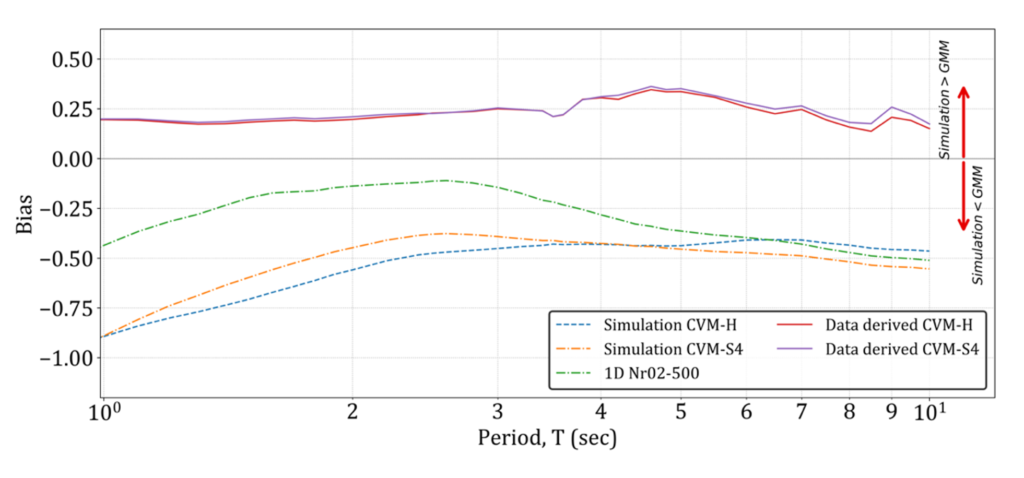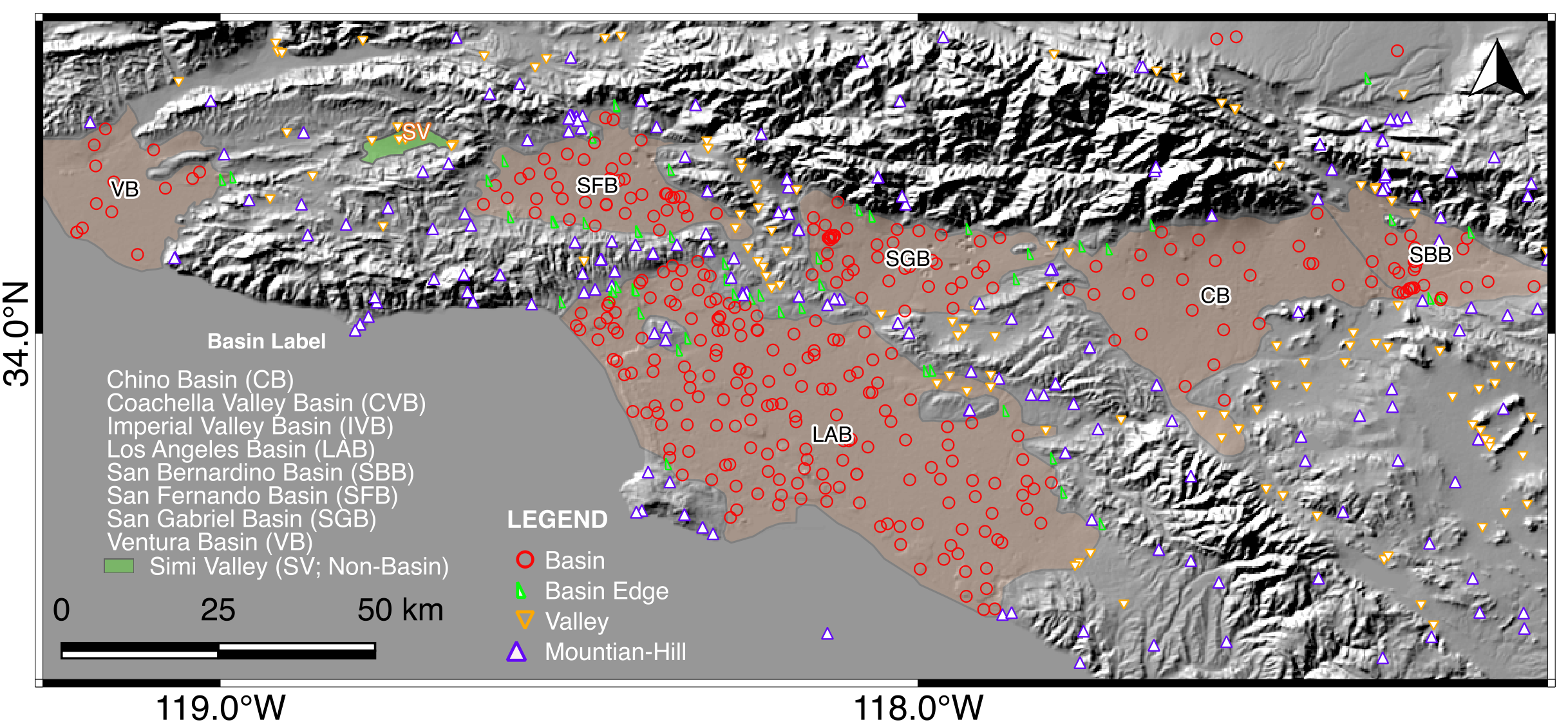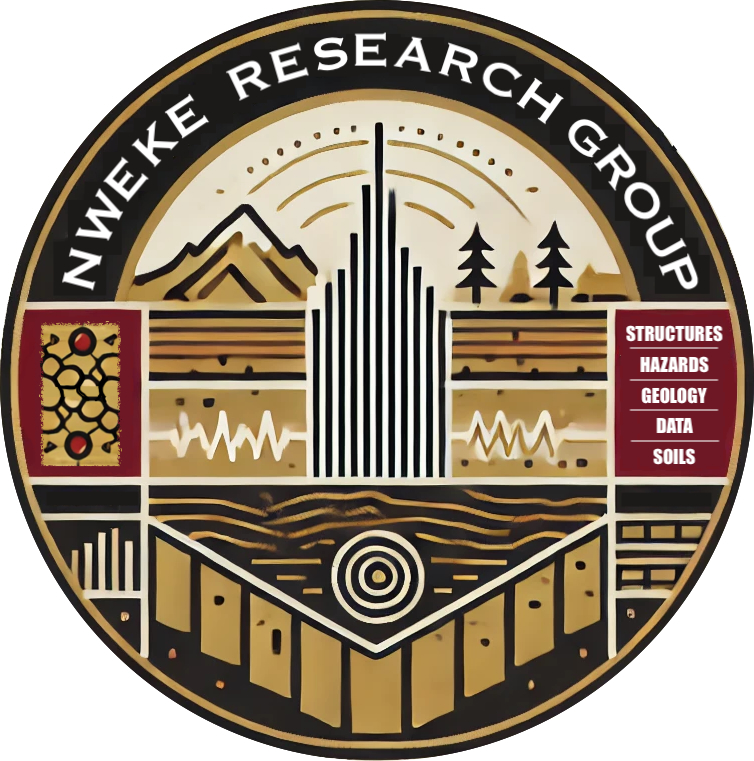
We conduct seismic hazard characterization using empirical methods, physics-based simulation, and data science/machine learning. This involves taking in ground motion data (recorded earthquake information ... i.e., shaking intensity and duration) from past events and use it to develop models for probabilistic forward prediction/estimates of hazard intensity. We also focus on site characterization using various kinds of data (satellite data, measured data with in-house sensors, etc.). Our overall goal is to understand how much shaking will occur at any given location given the location of hazard sources (surrounding faults).
Current Projects (Selected)
Geometric Parameterization of Southern California Sedimentary Basins for Site Response Analysis and Modeling:
- This project explores alternative means for describing 3D features that influence seismic site response. The objective is to leverage innovative parameterization that can capture the complex mechanisms between seismic waves and subsurface materials so as to improve the characterization of site response in sedimentary basins.

Reconciling Bias in Moderate Magnitude Earthquake Ground Motion Predictions by Physics-Based Numerical Simulations:
- This project scrutinizes current protocols and components employed in executing physics-based earthquake simulations. Specifically, it aims to determine the causes of the misfits between the output of the simulations and the observed measurements through a rigorous assessment of residuals. The culprit features will then by adjusted within the framework of the simulation

Site Amplification in Sedimentary Basins:
- The objective of this project was the development of a site response model for the southern California region that accounted for within- and outside-basin sites, as well as intermediate category sites that exhibited distinct site response features.
- The basin effects are a result of interactions between seismic waves and subsurface materials. These basin effects depend on the 3D geometry of the basin (shape, depth, orientation, etc.) which influence the
refraction (changes in direction, amplitude, and intensity), reflection (can lead to focusing and/or trapping of waves), and possibly conversion (change into secondary wave types like surface waves) of seismic waves.


